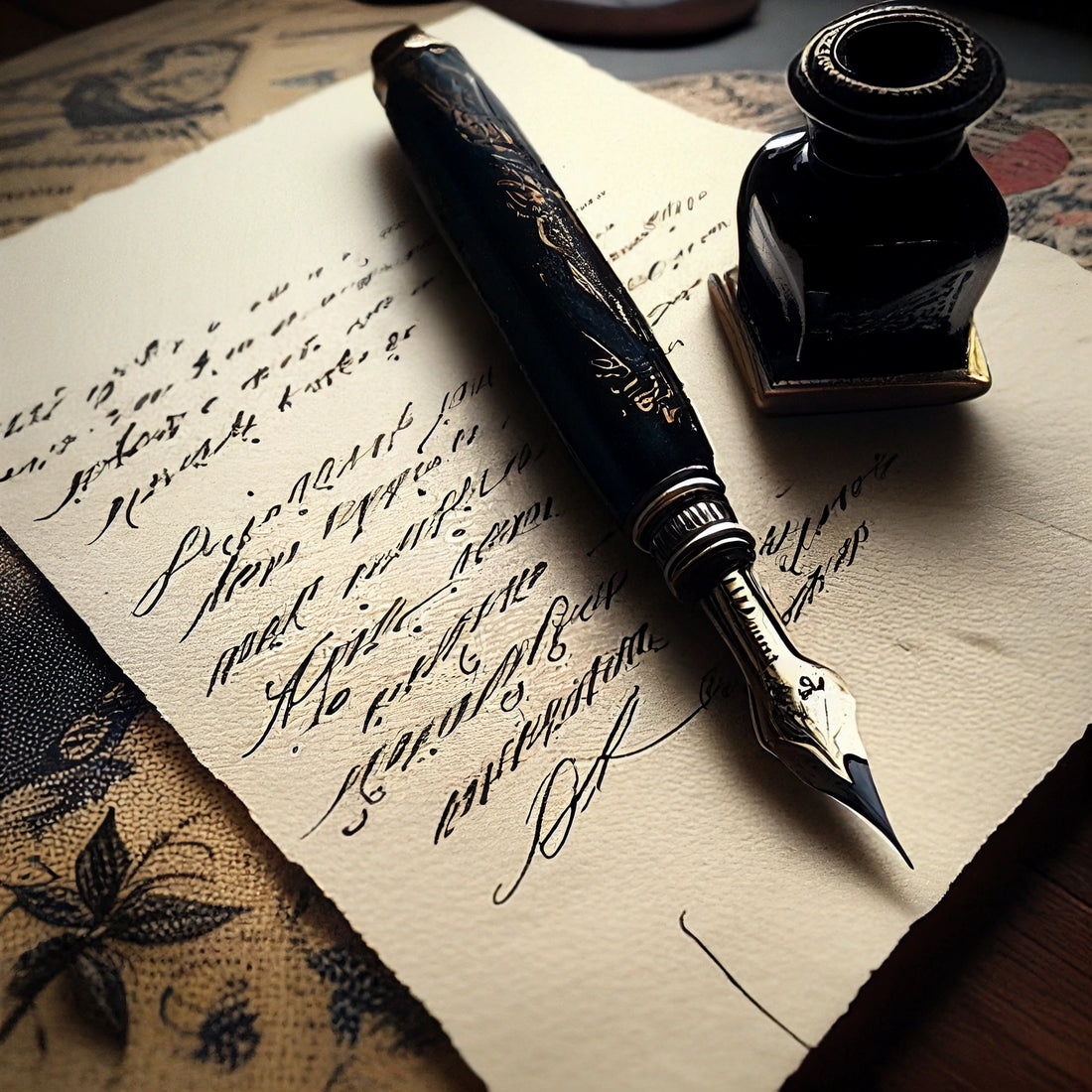In a world where typing and digital communication have become the norm, the use of fountain pens has seen a surge in popularity. Fountain pens provide a writing experience that is unmatched by ballpoint pens and other modern writing tools. Not only do they produce elegant and refined handwriting, but they also offer a sense of personalization and a unique writing experience.
Fountain pens have been around for centuries and were once a standard writing tool. They have a rich history and were used by prominent writers, artists, and intellectuals throughout history. Although they lost popularity over time due to the rise of ballpoint pens, fountain pens have made a comeback in recent years, with many enthusiasts rediscovering the joys of writing with a fountain pen.
In this post, we will discuss the techniques for improving your penmanship while writing with a fountain pen. We will cover everything from choosing the right pen to writing techniques, practice exercises, and caring for your fountain pen. By the end of this post, you will have a good understanding of how to write with a fountain pen and how to improve your handwriting.
Choosing a Fountain Pen
Before you can start writing with a fountain pen, you need to choose the right pen for you. There are many different types of fountain pens available on the market, each with its own unique style and characteristics. Here are some things to consider when choosing a fountain pen:
-
Nib size: The nib is the metal tip at the end of the pen that comes in contact with the paper. Nib sizes range from extra-fine to broad, with medium being the most common. The size of the nib affects the thickness of the lines you can produce, so choose one that fits your writing style.
-
Ink system: Fountain pens can use either a disposable ink cartridge or a converter that allows you to use bottled ink. Cartridges are more convenient, while converters offer more flexibility and cost savings.
-
Pen material: Fountain pens can be made of different materials such as plastic, metal, or resin. Each material has its own benefits, and the choice ultimately depends on your personal preferences.
Once you have an idea of what you want in a fountain pen, try out different models and brands to see which one feels the most comfortable and suits your needs. It's also helpful to read reviews and get recommendations from other fountain pen enthusiasts.
Choosing the right fountain pen is important because it can make a big difference in the writing experience and the quality of your handwriting. A good fountain pen should be comfortable to hold, provide consistent ink flow, and produce smooth, clean lines.
Preparing Your Fountain Pen
Once you have chosen your fountain pen, it's important to prepare it properly before you start writing. Here are the steps to follow:
-
Install the ink cartridge or converter: If you are using a disposable ink cartridge, simply insert it into the pen until it clicks into place. If you are using a converter, insert it into the pen and then dip the nib into the ink bottle and twist the converter to draw the ink into the pen.
-
Prime the nib: Hold the pen nib down and gently shake it to encourage the ink to flow. You can also tap the nib lightly on a piece of paper to help the ink flow smoothly. Be sure to clean the nib with a soft cloth before writing to remove any excess ink or debris.
-
Test the ink flow: Before you start writing, test the ink flow by making a few strokes on a piece of scrap paper. If the ink flow is too dry, you can try adjusting the nib angle or applying more pressure. If the ink flow is too wet, you can try adjusting the nib angle or writing more slowly.
Preparing your fountain pen properly will ensure that it writes smoothly and produces high-quality handwriting. It's also important to remember to clean your fountain pen regularly to maintain its performance and longevity.
Proper Grip and Posture
Having the right grip and posture when writing with a fountain pen can make a big difference in the quality of your handwriting. Here are some tips to follow:
-
Hold the pen correctly: Hold the pen between your thumb and index finger, with your middle finger supporting the pen barrel. The pen should rest on the knuckle of your ring finger.
-
Keep your wrist straight: Avoid bending your wrist while writing, as this can cause strain and affect the quality of your handwriting. Instead, keep your wrist straight and use your fingers to control the movement of the pen.
-
Sit up straight: Maintain good posture while writing by sitting up straight and keeping your feet flat on the ground. This will help you breathe properly and reduce fatigue in your hands and wrists.
Proper grip and posture may take some time to get used to, but it's worth the effort for the improvement in handwriting that it can bring. With practice, you will develop a comfortable and natural grip and posture that will help you write smoothly and effortlessly.
Writing Techniques
Writing with a fountain pen requires a different technique than writing with a ballpoint pen or pencil. Here are some techniques to follow:
-
Use light pressure: Fountain pens have a flexible nib that responds to the pressure you apply. Use a light touch to produce thin lines and a heavier touch for thicker lines.
-
Use the correct angle: Hold the pen at a 45-degree angle to the paper for optimal ink flow and smooth writing. Adjust the angle as needed for different writing styles or for emphasis.
-
Write slowly: Fountain pens write best when used at a slower pace, allowing the ink to flow smoothly onto the paper. This can also help you maintain proper grip and posture while writing.
-
Practice cursive handwriting: Cursive handwriting is well-suited for writing with a fountain pen because it allows for a smooth, continuous flow of ink. Practice your cursive handwriting to improve the quality of your handwriting and make the most of your fountain pen.
By following these writing techniques, you can make the most of your fountain pen and produce elegant, refined handwriting. Don't be afraid to experiment and try different writing styles to find the one that works best for you.
Maintaining Your Fountain Pen
Proper maintenance is key to keeping your fountain pen in good condition and ensuring it lasts for years to come. Here are some tips for maintaining your fountain pen:
-
Clean your pen regularly: Regular cleaning is essential to maintain the performance of your fountain pen. Rinse the nib and feed under running water, or soak them in water for a few hours to remove any dried ink or debris.
-
Store your pen properly: Store your fountain pen in a pen case or pouch to protect it from scratches or damage. Keep it away from direct sunlight or heat, which can cause the ink to dry out.
-
Use high-quality ink: Use only high-quality ink in your fountain pen to ensure optimal performance and minimize the risk of clogging or damage to the pen.
-
Service your pen as needed: If your fountain pen is not writing properly, or if you notice any damage or wear and tear, take it to a professional pen repair specialist for servicing.
Taking good care of your fountain pen will help it last for many years and maintain its high performance. With regular cleaning, proper storage, and quality ink, your fountain pen can continue to produce elegant, refined handwriting for a long time to come.

